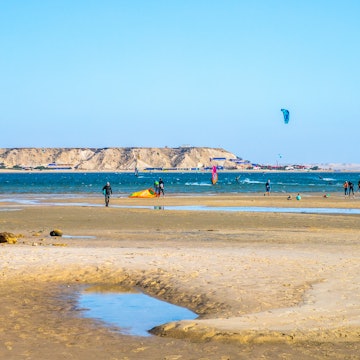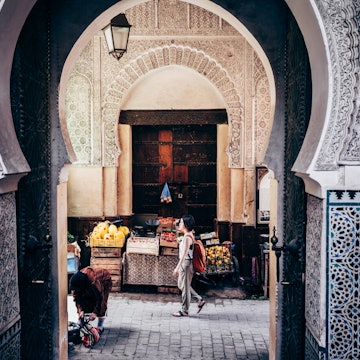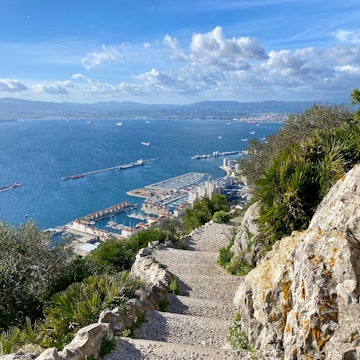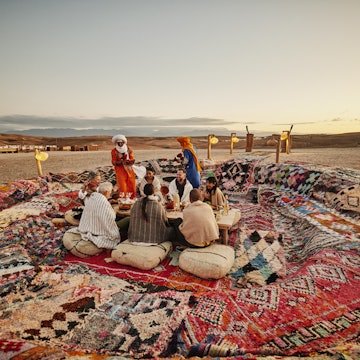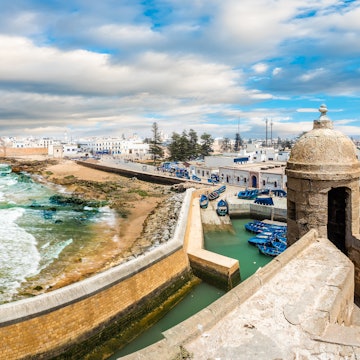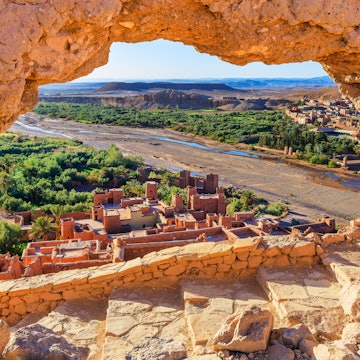

There’s nothing like a trip to the Sahara to evoke a sense of space and timelessness. Dan Baciu/Shutterstock
Few visitors will travel the entire length, breadth, and depth of Morocco; those who do will be awestruck by the beauty and diversity of its architecture, cultures, and landscapes. From the Atlantic Ocean to the Mediterranean Sea, from modern cities to ancient kasbahs, from Sahara dunes to snow-capped mountain peaks, and from indigenous tribes to suited city dwellers, Morocco offers an abundance of beautiful places.
One of Morocco’s most admirable and enduring cultural traits is presence; visitors often observe how Moroccans are fully present in each moment. A way of living that makes it easy to find beauty everywhere. There are, however, some stand-outs; these are the must-see places in Morocco that have evoked a sense of awe and left a lasting impression on me.
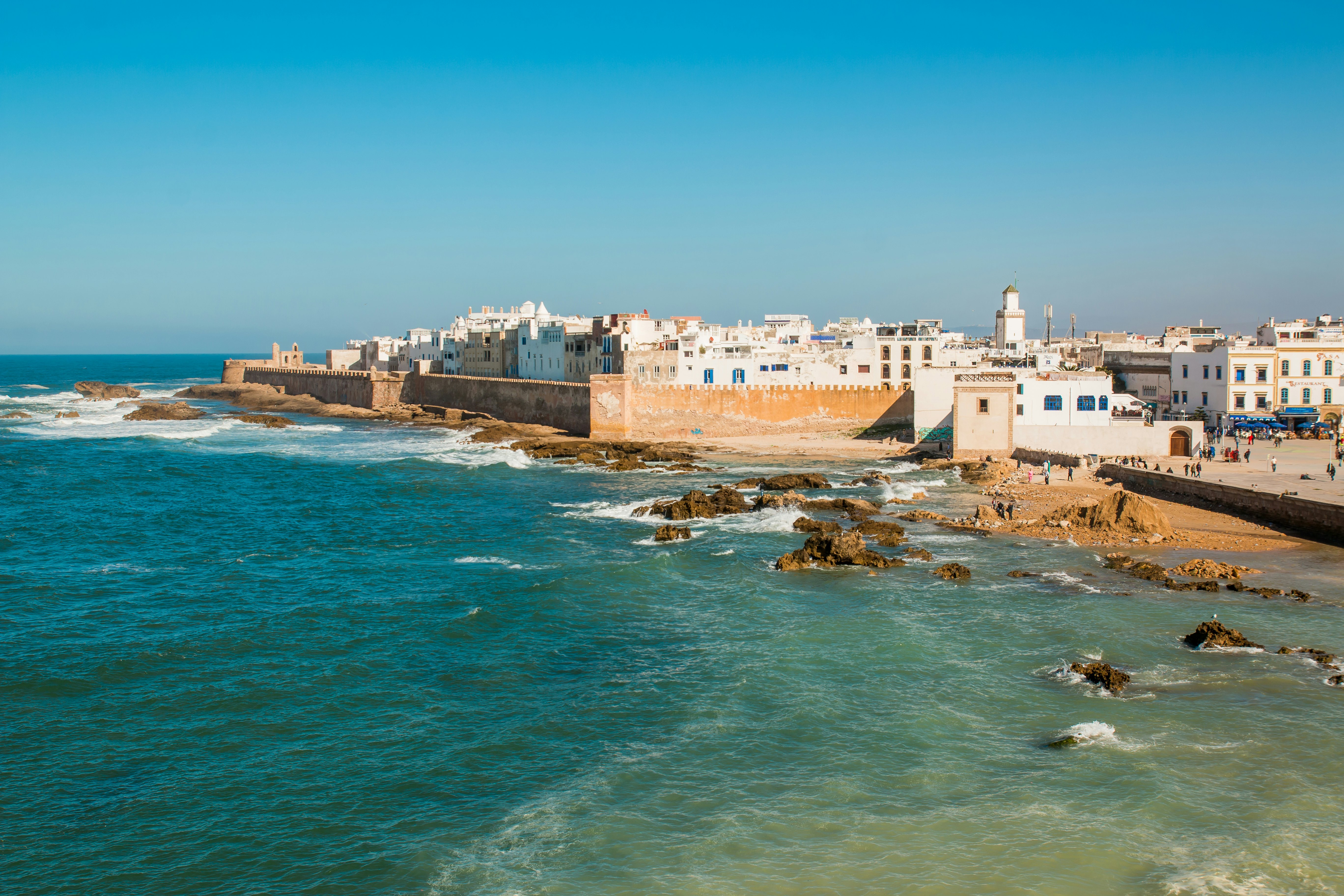
1. Mediterranean Coast
Best for picture-perfect beaches
Most international visitors head south to Morocco’s Atlantic Coast for their beach vacation, specifically the regions of Agadir and Essaouira. This is ideal if you’re looking for winter sun and surfing, or windsports. However, Morocco’s northern beaches, east of Tangier, offer calmer, warmer Mediterranean waters. At Tamuda Bay, you’ll find gentle-sloping, shallow shores with several family-friendly and luxury resorts. Nearby, just outside Al Hoceima, a coastal road connects idyllic sandy coves with clear Mediterranean waters; it’s also a beautiful place for hiking in the Al Hoceima National Park.
Planning tip: The area is still predominantly visited by locals and Moroccans living abroad. Although it gets crowded during the peak Summer season, especially in August, it remains quite undiscovered for the rest of the year.
2. Sahara desert
Best for emptiness and starry nights
There’s nothing like a trip to the Sahara to evoke a sense of space and timelessness. One of the world’s largest deserts, the Sahara offers a vast expanse of sand and rocky plateaus, spectacular sunsets, and, at the right camp, a clear (no light pollution) night sky. Climb to the top of Erg Chigaga or Erg Chebbi, two of the Moroccan Sahara’s tallest dunes, to look out over seemingly endless seas of sand. Marvel at how fine lines of sand ripple like corduroy, forming peaks and shadow pockets in the dunes; it’s a privilege to experience the natural world in its purest form. The beauty of the Sahara is matched by romantic desert camps where you can enjoy lantern-lit dinners under the stars and a cosy night’s sleep in Bedouin tents.
Planning tip: Stay at Camp al Koutban to be far from light pollution and close to Erg Chigaga, one of Morocco’s tallest dunes.
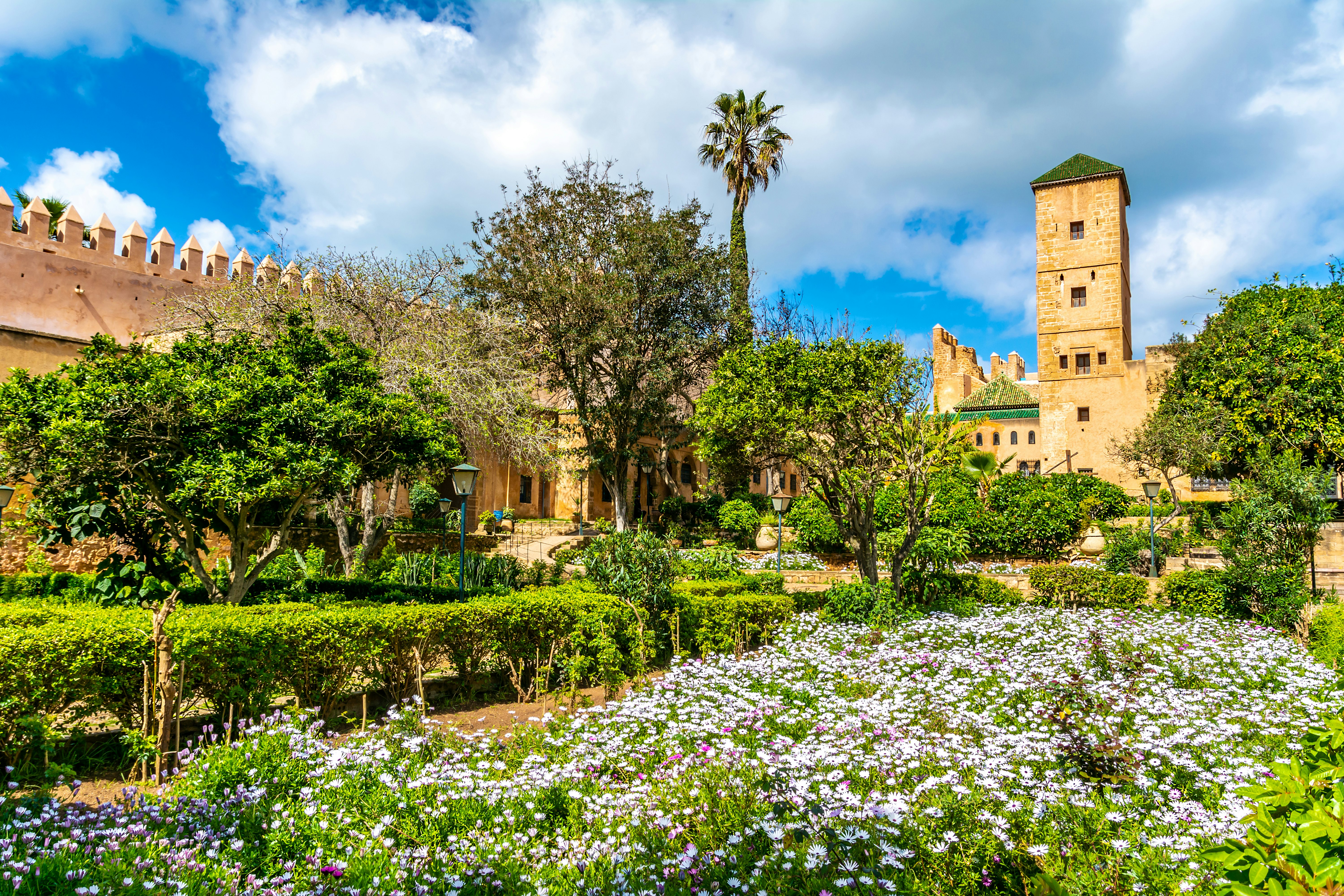
3. Rabat
Best for city-lovers
Rabat is Morocco’s political capital, and the royal family's main place of residence. The local saying, Rabat is “clean, green, and zwin”, zwin meaning beautiful in Arabic, is spot on. A beautiful city that perfectly blends its modern and historic personalities. Discover Roman ruins at Chellah and the charming Kasbah des Oudaias, a 12th-century citadel featuring cobbled streets, whitewashed houses, Andalusian Gardens, and picturesque ocean views. Nearby, the Mausoleum of Mohammed V is an exquisite marble memorial; look up to see the exquisite hand-carved, gilded cedarwood ceiling. The city’s modern features can be enjoyed in its tree-lined boulevards, urban parks, art galleries, art deco architecture, and along the river, where you’ll find the striking Grand Théâtre de Rabat and tinkling yacht masts in Salé Marina.
Planning tip: Stay at a riad in the Medina to be close to the Kasbah des Oudaias, the river Bou Regreg, and the city’s main beach, Oudaya.
4. Hassan II Mosque
Best for Islamic architecture
Hassan II Mosque is one of Morocco’s finest examples of Islamic architecture, a magnificent display of what mankind can create. It stands tall - the minaret is 210m - hovering over the Atlantic Ocean in Casablanca. It’s majestic on the outside, and even more so on the inside. Step into the expansive prayer hall, and you’ll be struck by an eye-watering display of hand-carved details, from zellige mosaic tiles to granite, marble, and cedarwood. It’s the only mosque in Morocco where non-Muslims are permitted to visit; please check the opening hours on their website.
Planning tip: If you have time before or after your Mosque tour, the hammam below the mosque is now open to visitors.
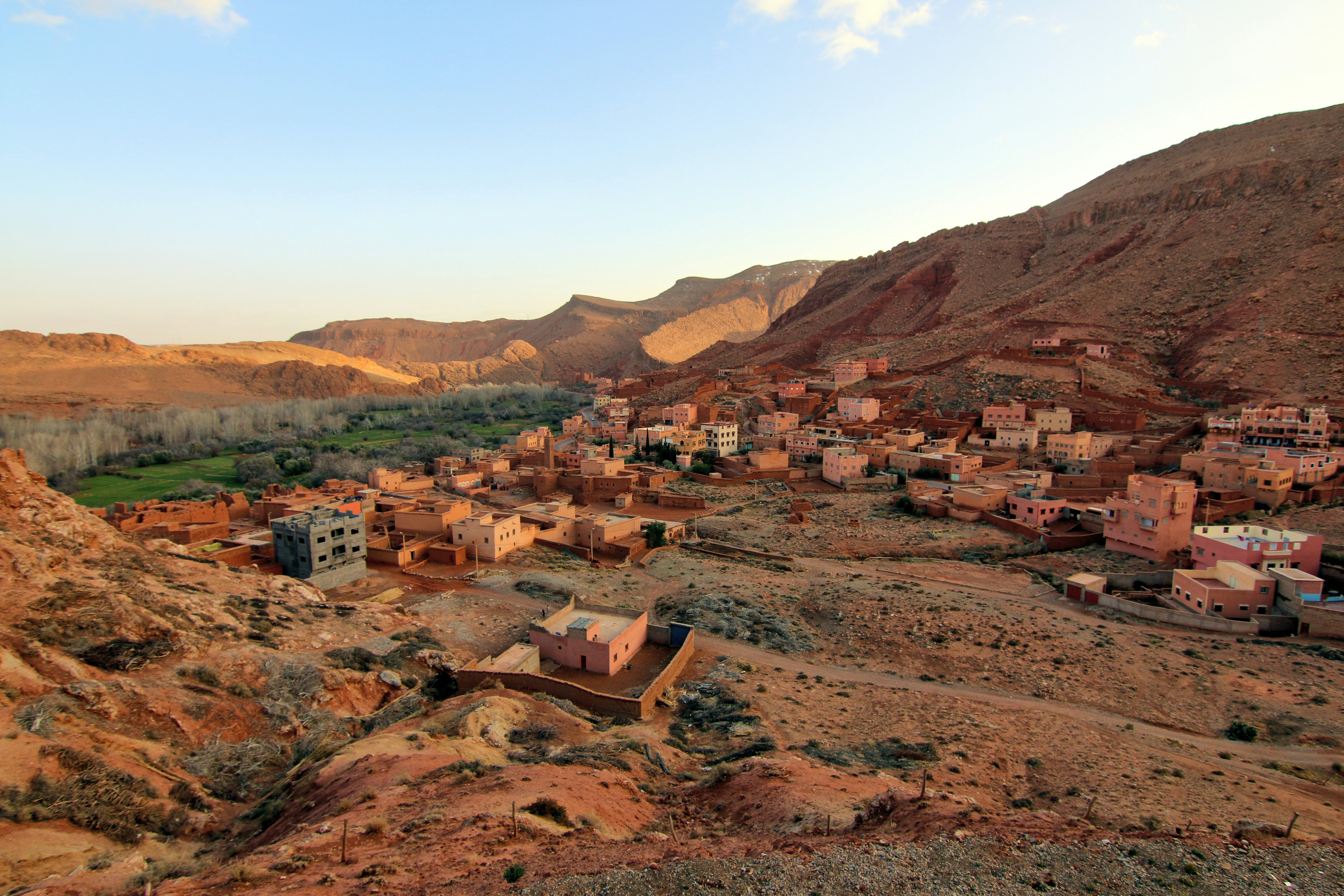
5. High Atlas Mountains
Best for scenery
Morocco’s High Atlas is home to North Africa’s highest peak, Mount Toubkal. It’s possible to summit the mountain in a two-day trek from Imlil with a local guide. Even if you’re not up for trekking in the region, you can enjoy the breathtaking mountain vistas and valleys from rural lodges and scenic drives. The High Atlas is home to the Amazigh people, whose peaceful way of living is steeped in tradition and characterized by a close sense of community. Spend a short amount of time in their company, enjoying home-cooked tagines or quiet moments of reflection against a snow-capped mountain backdrop, to appreciate the beauty of simple living.
Planning tip: Visit from November onwards for a chance to see fresh snow on the peaks, and in springtime for the blossoming flowers.
6. Volubilis
Best for archaeologists
At the ancient Roman city of Volubilis, you’ll find some of the country's finest and best-preserved mosaics. The beauty lies in their color and intricate details, as well as their longevity. They are, for the most part, in superb condition. It’s a joy to appreciate them in their original place, alongside restored columns, arches, a basilica, a capitol building, and remnants of olive presses, hammams, and homes that are spread across the 40-hectare UNESCO-protected area. The impressive site is situated within a short walk of the picturesque hilltop town of Moulay Idriss Zerhoun, a significant holy place for Moroccans.
Planning tip: Volubilis is best visited in the early morning or late afternoon as there is little shade on the site. Stay at Dar Zerhoun, and you can walk or ride a donkey down past 800-year-old olive trees and farmland to the ruins.
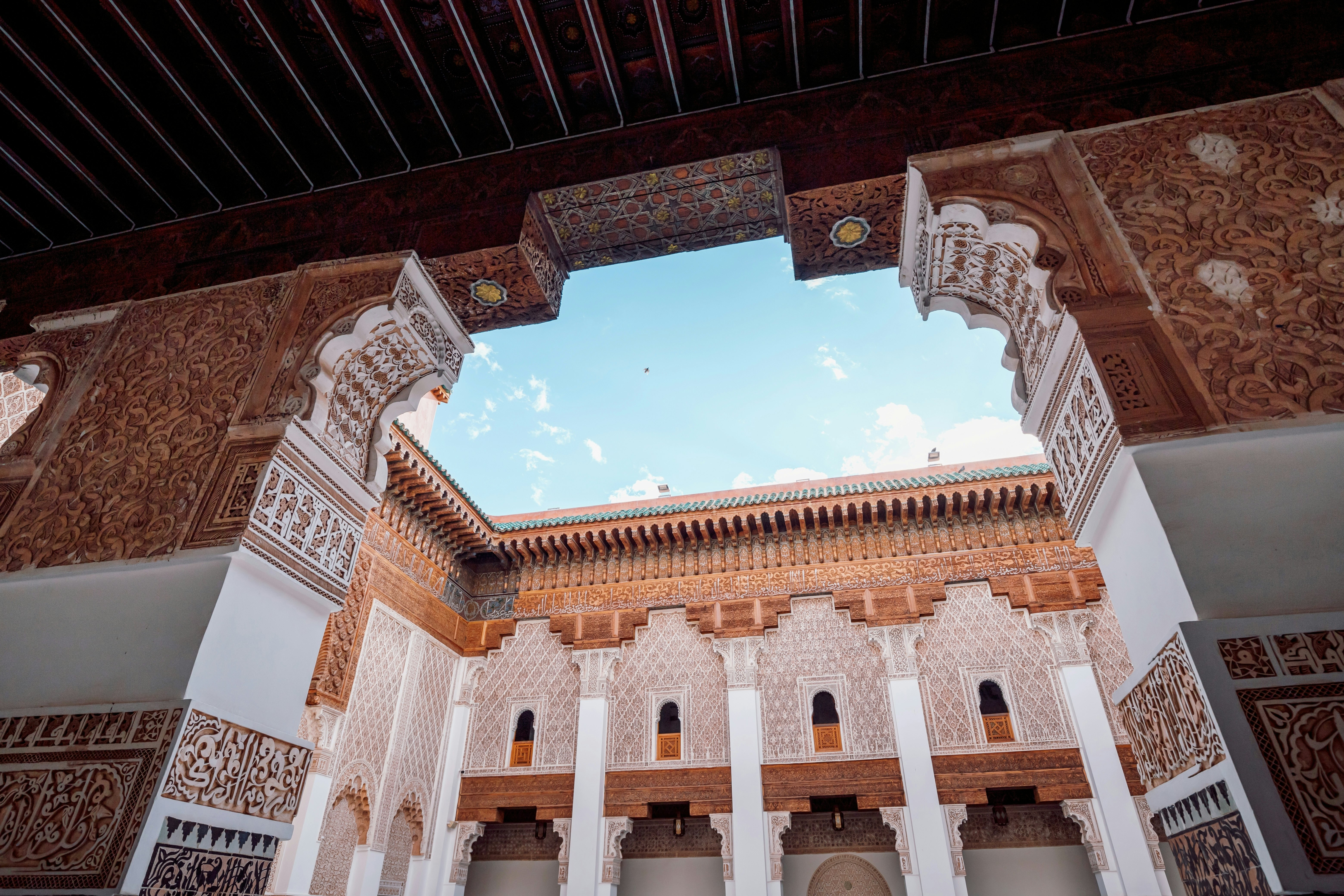
7. Marrakech
Best for creatives
Marrakech is a hub for artists, attracting creative talent from around the world. Fondly known as the ‘Pink City’, due to the rosy hues of many of its buildings, its beauty can be experienced through vibrant gardens, exquisite palaces, elegant hotels, stunning culinary offerings, and diverse architectural styles.
Photographers, chefs, painters, writers, fashion designers, and interior designers speak of the inspiration they draw from Marrakech, its light, colors, warmth, and unrelenting creative energy. Their artistic flair can be enjoyed on color-popping rooftops, in candlelit riads, on the rails of designer boutiques, in art galleries, and in the intricate details of Islamic architecture that have put palaces like Bahia Palace, bahia meaning beautiful, and riads on the global map.
Planning tip: African art lovers can attend the city’s annual global art fair, 1-54 Contemporary African Art Fair hosted in February, or, throughout the rest of the year, the Museum of Contemporary African Art Al Maaden, MACAAL.
8. Dakhla
Best for pristine wilderness
In a world that speaks of overstimulation and overtourism, Dakhla offers a natural remedy. This far-flung sand peninsula juts out from the Sahara Desert into the Atlantic Ocean, creating an alluring natural lagoon —a kaleidoscope of blues —that is a magnet for kitesurfers, oysters, and flamingos. Whilst its geopolitical status is disputed - you may know it as the Western Sahara or Moroccan Sahara - what visitors to Dakhla do agree on is its raw beauty, abundance of space, and wilderness areas. With low tourism numbers, for now, it is a nature lover’s paradise, with idyllic ecolodges on the lagoon shores, remote beaches, wind sports, and unpolluted waters.
Planning tip: Kitesurfing and wind watersports put Dakhla on the tourist map. The main windy season runs from April to September, but throughout the year, it’s usually possible to find a windy spot making it ideal for windsports.
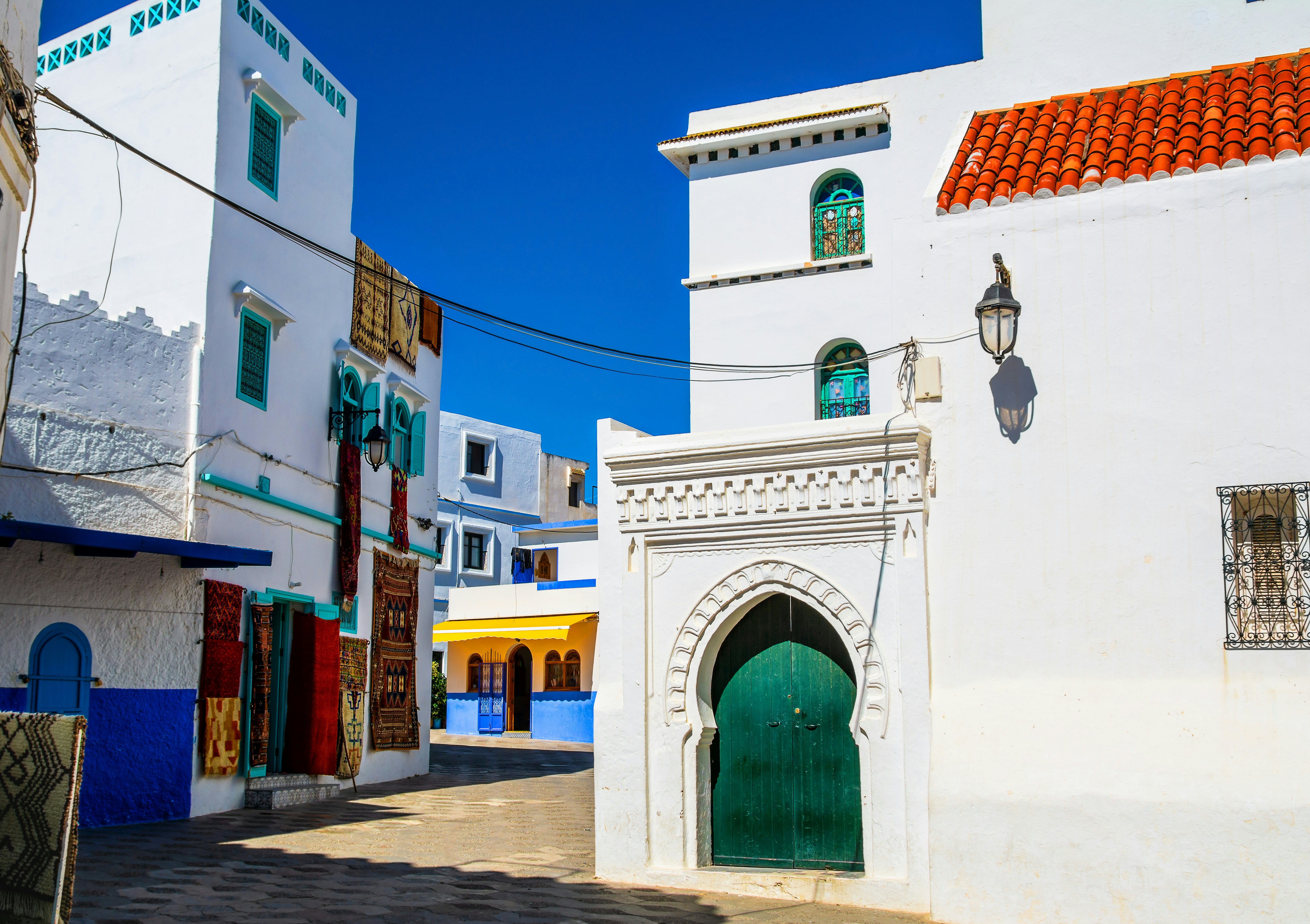
9. Asilah
Best for quaint-town seekers
This beautifully bohemian seaside town is perched on a lovely stretch of Morocco’s northern Atlantic Coast. Historic 15th-century rampart walls, white and blue-washed houses, and colorful shutters against a cerulean sky create a charming composition. Asilah is well-loved for its effortless, artistic spirit. Every summer, the city hosts a cultural festival, and local artists paint their whitewashed walls with fresh artwork. Its former Spanish influence can be enjoyed in the tapas and wine offered on the town’s simple yet delicious, seafood-centric menus. Asilah is a beautiful place to potter, relax, and be creatively inspired. Bonus: the beaches in and around the city are some of the prettiest along the Atlantic.
Planning tip: Stay in a traditional riad in the Medina to immerse yourself in the essence of Asilah, or channel your inner artist on one of Dar Ambrosia’s creative holidays.
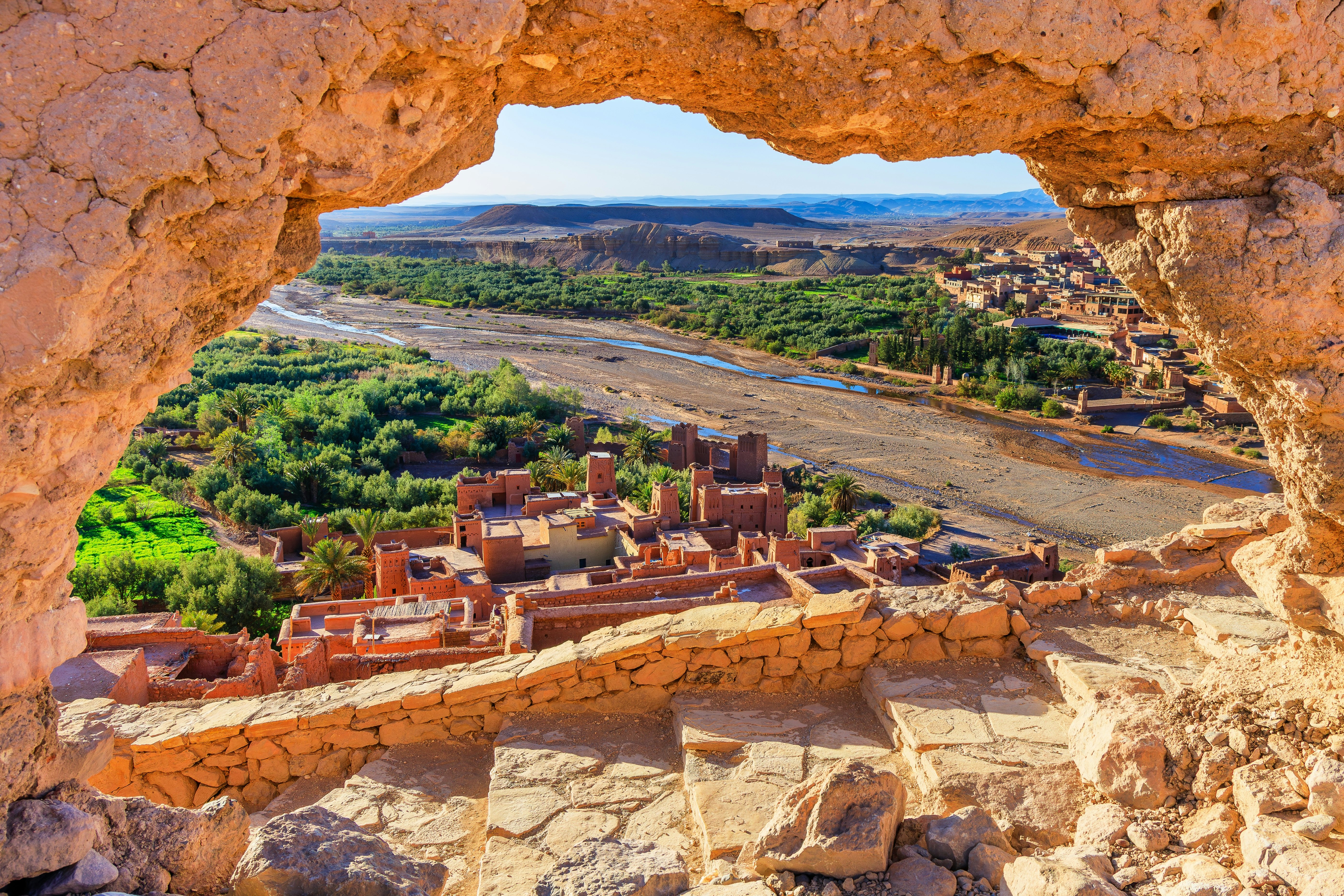
10. Ait Ben Haddou
Best for cinephiles
If there were a standout postcard image for the ancient side of Morocco, Ait Ben Haddou would be it. This striking, historic ksar, a fortified village, overlooks the Ounila Valley. It’s been a set for many Hollywood classics, including Gladiator and The Mummy. From some angles, Ait Ben Haddou resembles a cluster of fragile houses made of lightly stacked playing cards. It’s not constructed from paper; it’s clay bricks, some etched with motifs. At first sight of the earthen dwellings and defense walls, I thought, ‘How is this place still standing?’ Perhaps it’s the vulnerability that makes this impressive, historic site even more beautiful.
Planning tip: Combine a visit here with a trip to Atlas Studios in nearby Ouarzazate for a glimpse into Morocco’s movie-making scene. Here you can walk through the film sets of Gladiator II, Game of Thrones, and Jewel of the Nile.
11. Ameln Valley
Best for mountain and nature enthusiasts
I remember my first sunset in the Ameln Valley, a deep, coppery glow spreading as the sun sank into the red granite mountains. The lesser-known Anti-Atlas mountains are quiet, remote, and blissfully timeless. Most visitors come for the hiking trails, rock-climbing, and to explore the nearby town of Tafraoute. The steep mountain sides drop down into a valley (20km long) that’s filled with almond, argan, and date palm trees, and clusters of traditional terracotta-colored Amazigh homes. A short stay in one of the region’s simple guesthouses can attune you to the grounding rhythm of the mountains and the beautiful balm of nature.
Planning tip: Visit in spring for a chance to see the valley under a dusting of sweet-scented white almond blossom. Include a stop at Maison Traditionnelle for a tour of one of the region’s 400-year-old houses.






